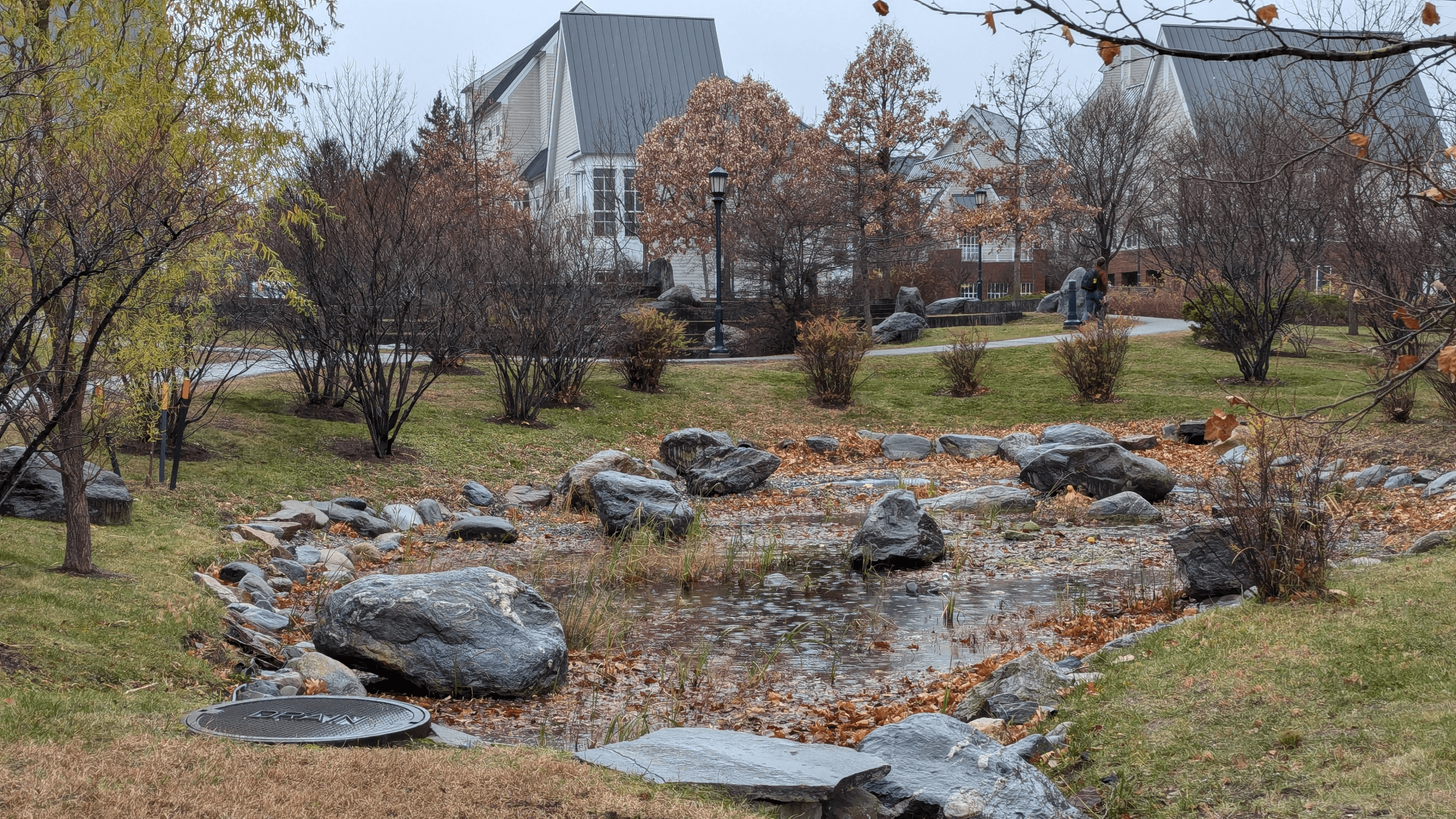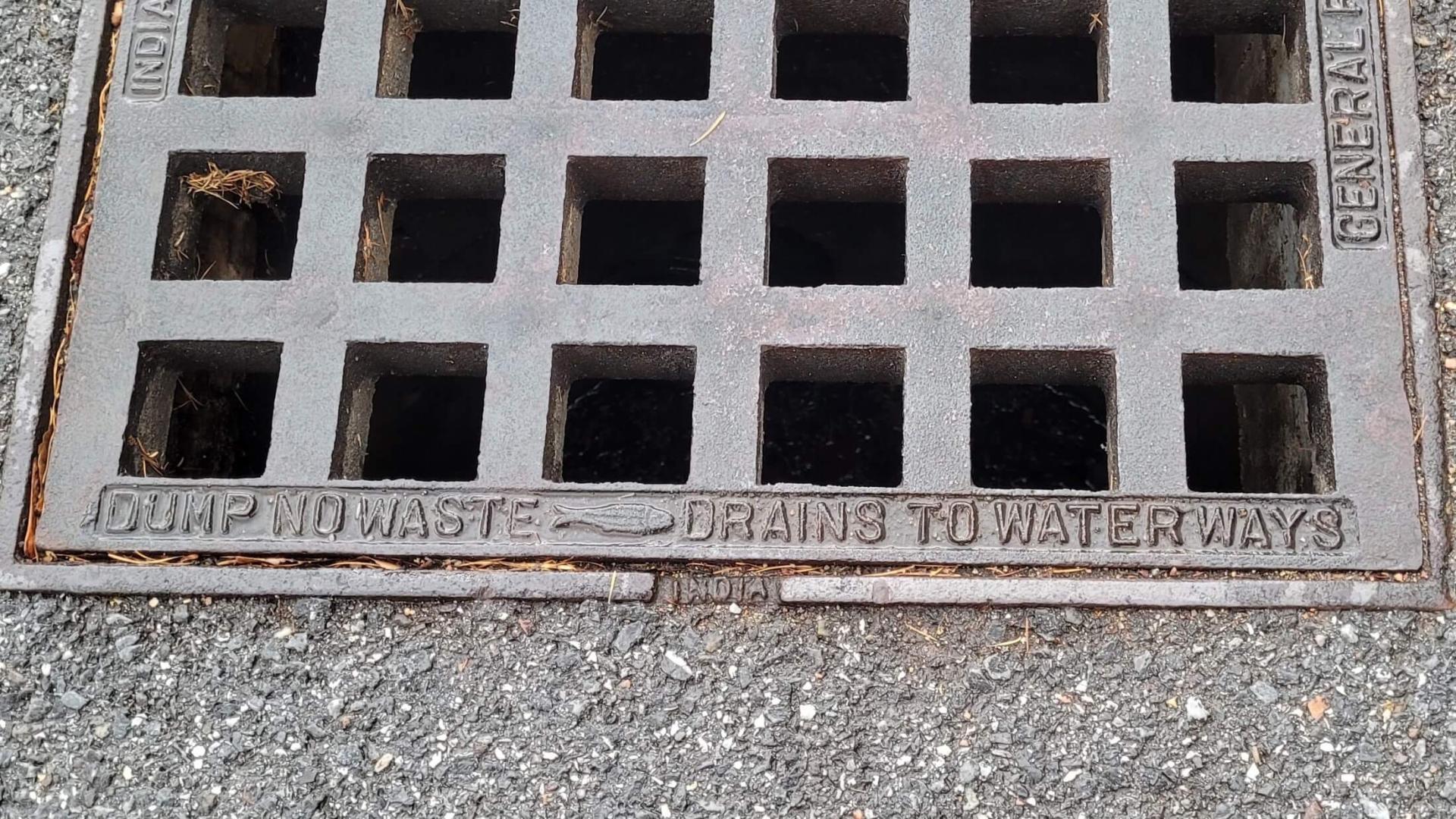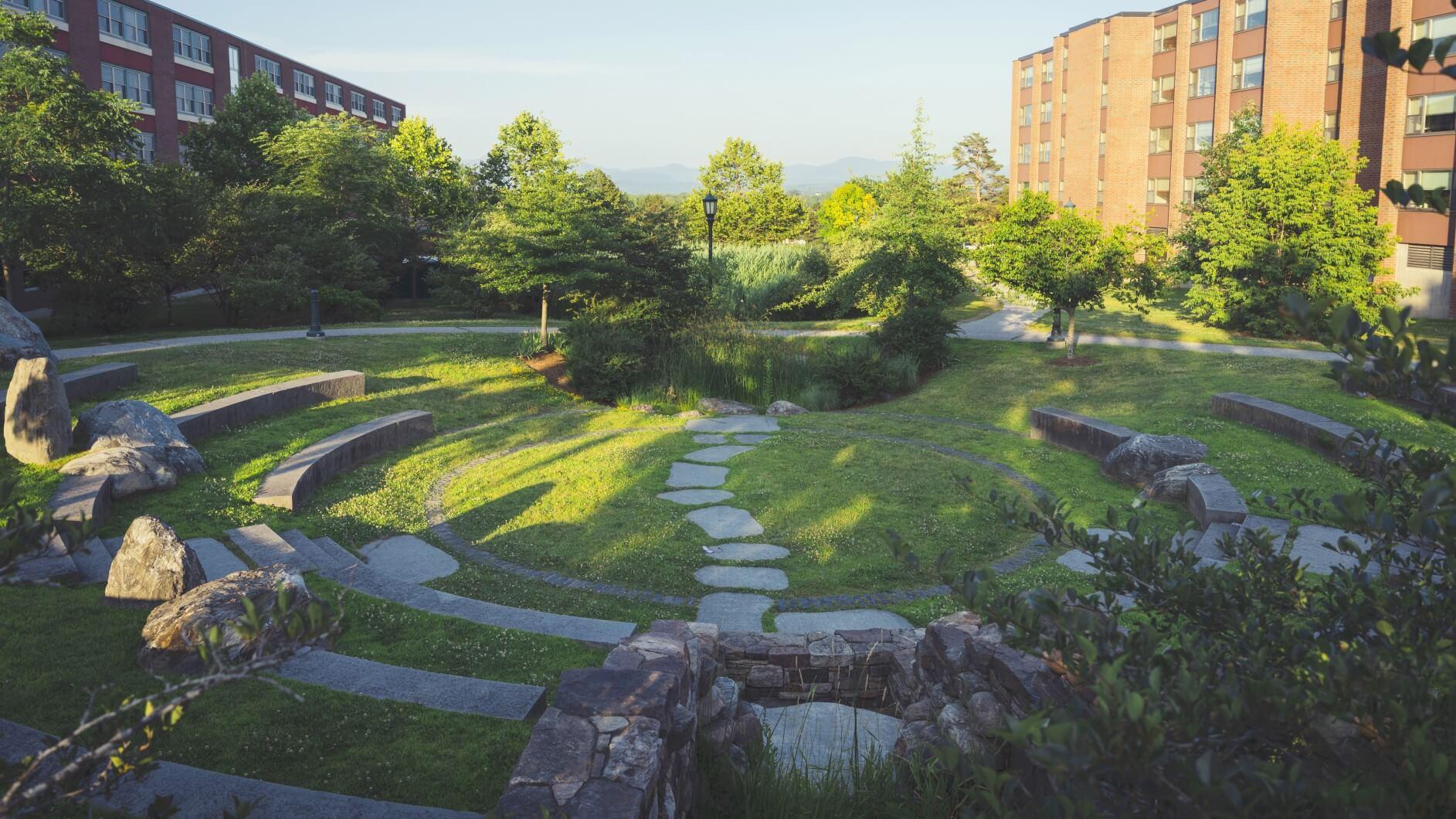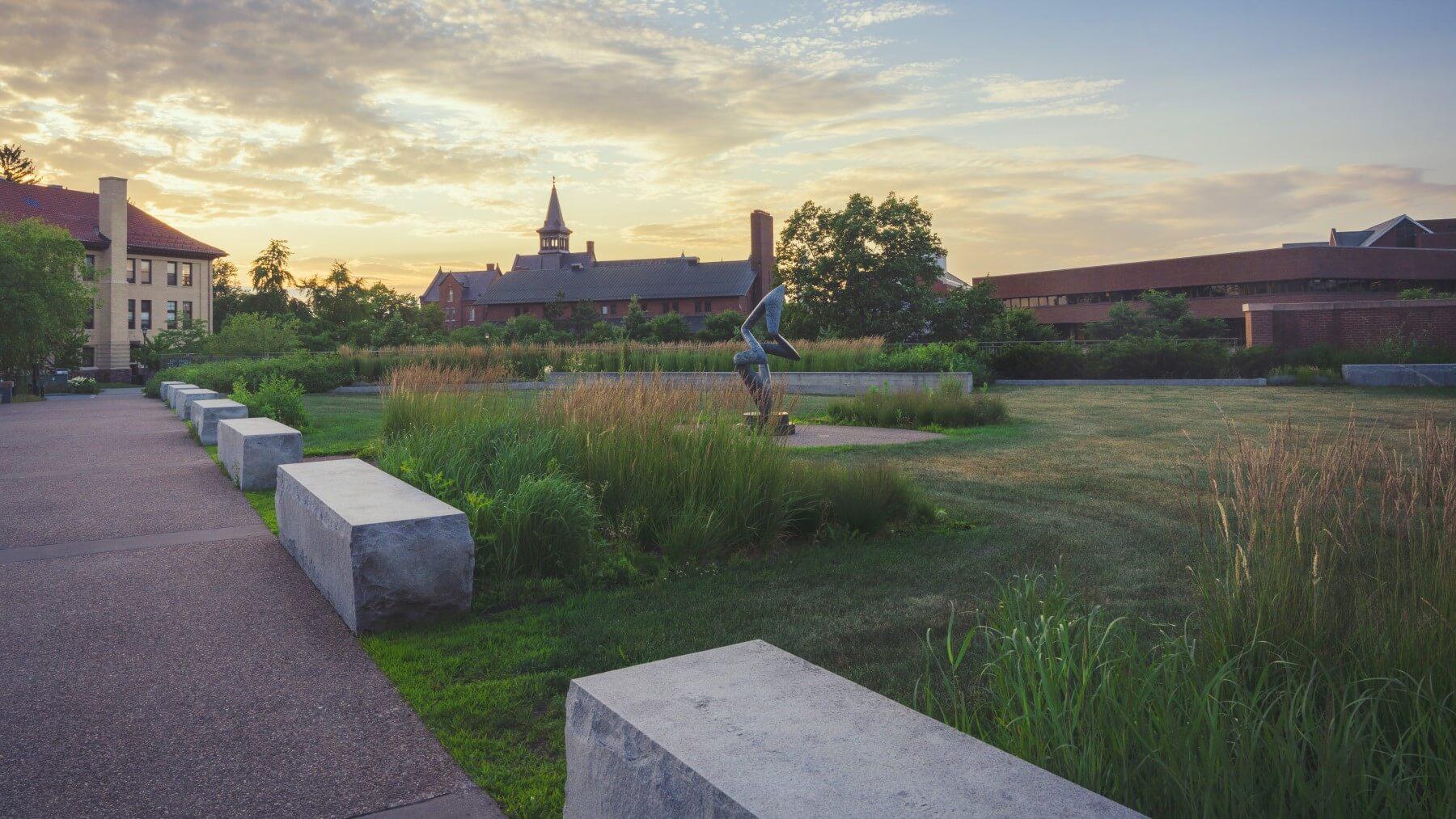The University of Vermont uses best management practices (BMP's) to prevent, control, and treat stormwater runoff on campus.
Where Does Our Stormwater Go?
UVM's Main Campus covers approximately 463 acres located within the cities of Burlington and South Burlington. This area drains into four different stream watersheds:
- Centennial Brook
- Englesby Brook
- Potash Brook
- Winooski River
These four watersheds ultimately discharge to Lake Champlain. Additionally, portions of stormwater from UVM's campus drain into the City of Burlington's combined sewer system where the runoff is treated --along with municipal wastewater-- before being discharged into Lake Champlain.

Regulatory Framework: MS4 Permit
The University’s stormwater system functions within a highly regulated environment of federal, state and local regulations and permit requirements. The University uses a multifaceted approach to limit and treat stormwater runoff as well as participate within the wider regional network to address stormwater impacts throughout the affected watersheds and beyond.
In accordance with these regulations, the University is defined as a "non-traditional" MS4 (responsible for a Municipal Separate Storm Sewer System). This means that the University must obtain and comply with MS4 permit requirements which are federally mandated Clean Water Act permit that the State of Vermont has been authorized to administer.
Stormwater Management Plan (SWMP)
The MS4 permit requires that UVM prepare and implement a Stormwater Management Plan (SWMP) that addresses six (6) Minimum Control Measures. These entail:
- Public Education and Outreach
- Public Participation/Involvement
- Illicit Discharge Detection and Elimination
- Construction Site Runoff Control
- Post-Construction Runoff Control
- Pollution Prevention/Good Housekeeping
The first two measures (Public Education and Outreach, and Public Participation/Involvement) are not site specific and so the University participates in a regional effort with other MS4 entities to educate and involve the public in best practices to reduce stormwater impacts.

UVM helps fund and regularly attends the Chittenden County Regional Planning Commission’s Clean Water Advisory Committee (CWAC) meetings to discuss stormwater projects, regulations, goals, education, and outreach. The CWAC also has an MS4 Subcommittee consisting of representatives of the nine municipalities and three agencies, including UVM, charged with implementing the Public Education and Outreach and Public Participation and Involvement measures. There are several branches of activities including the "Rethink Runoff" public education campaign.
UVM complies with the other four Minimum Controls Measures through a complex campus-wide system infrastructure of stormwater facilities, treatments, conveyances and best practices.

The University submits an annual report to the State of Vermont that documents these efforts. As permit conditions evolve, the University has added treatments and adjusted best practices as necessary.
2024 UVM Stormwater Plan (PDF)
For copies of prior year's SWM plans, email UVM Planning, Design and Construction (arch@uvm.edu)
Flow Restoration Plans (FRPs)
In 2012, new permit conditions were added to develop Flow Restoration Plans (FRPs) to implement more stringent stormwater goals in each impaired watershed. The University worked with other MS4s in the same watershed to produce FRPs that address region-wide goals. Part of this process included identification of treatments and sites, and financing of these treatments. The University is a full partner in this effort, and there are several treatment sites that are on UVM land, funded by the University.
UVM’s Storm Watershed Map (PDF) has definitions of the storm watersheds, sizes and other information.
The cities of Burlington and South Burlington, and the towns of Colchester and Shelburne have created storm water utilities that charge all land owners, including UVM, for addressing storm water impacts. These cities and towns then use the funds from these fees to improve stormwater treatments and comply with their own MS4 requirements. The University pays fees as necessary, and also gets “stormwater credits” (i.e. discounts on the fee amounts) for use of our own stormwater treatment facilities.
UVM-owned and managed natural areas, such as the Colchester Bog, naturally contribute stormwater capacity to the municipal systems.
Additional UVM Efforts
In addition to the regulatory component of UVM’s efforts, other projects-- sometimes student and/or faculty-initiated-- treat stormwater on-site and/or provide infiltration where soil types enable this. The University continues to be a steward of the land, and participate in both UVM-specific and community efforts to address stormwater impacts locally and regionally.

[Some of the information on this webpage was adapted from State of Vermont Agency of Natural Resources information on the MS4 Permit.]